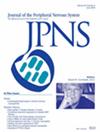Results From a Phase 1 Study Evaluating the Safety, Tolerability, Pharmacokinetics, Pharmacodynamics, and Efficacy of ANX005, a C1q Inhibitor, in Patients With Guillain–Barré Syndrome
Abstract
Background and Aims
Guillain–Barré syndrome (GBS) is an acute autoimmune peripheral neuropathy driven by autoantibodies and classical complement pathway activation. Despite treatments with intravenous immunoglobulin or plasma exchange, GBS remains characterized by variability in recovery and high incidence of residual disabilities. This randomized, double-blind, placebo-controlled Phase 1 trial evaluated the safety, tolerability, and pharmacokinetics of ANX005, a novel therapeutic targeting the classical complement cascade.
Methods
Patients with recent-onset GBS, who had no access to intravenous immunoglobulin or plasma exchange, received escalating doses of ANX005 or placebo as a single IV infusion. Primary objectives included assessments of safety. Secondary objectives included determination of pharmacokinetic and pharmacodynamic profiles and clinical outcomes through Week 8. Exploratory objectives included an evaluation of serum and cerebrospinal fluid (CSF) complement and tissue damage biomarkers.
Results
Fifty patients were randomized to receive either ANX005 (n = 38) or placebo (n = 12). ANX005 was well-tolerated across all doses with no dose-limiting toxicities, suggesting an acceptable safety profile. Pharmacodynamic data showed effective C1q inhibition and a reduction in neurofilament light chain levels, suggesting nerve damage mitigation. Exploratory endpoints evaluating clinical outcomes included improvements in Medical Research Council sum scores, GBS-Disability Score, and Overall Neuropathy Limitations Scale with ANX005 compared to placebo, particularly in patients receiving doses that inhibited serum C1q for ≥ 1 week and provided C1q blockade in the CSF.
Interpretation
These results support ANX005 as a targeted therapy for GBS that modulates the classical complement pathway. Further investigation in a larger Phase 3 trial is warranted to confirm these results and assess the long-term benefits of complement inhibition in patients with GBS.

 求助内容:
求助内容: 应助结果提醒方式:
应助结果提醒方式:


